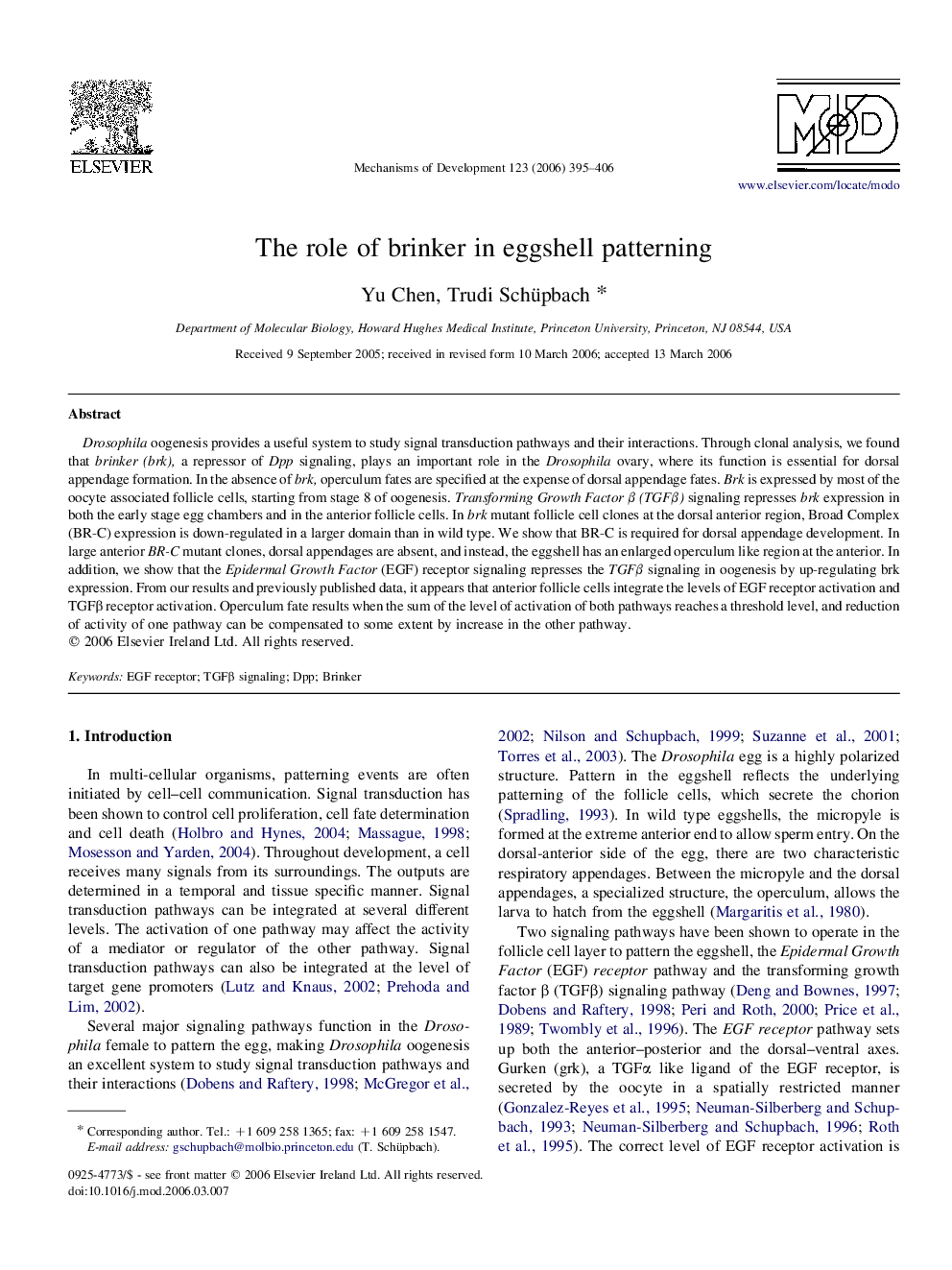| Article ID | Journal | Published Year | Pages | File Type |
|---|---|---|---|---|
| 2195432 | Mechanisms of Development | 2006 | 12 Pages |
Drosophila oogenesis provides a useful system to study signal transduction pathways and their interactions. Through clonal analysis, we found that brinker (brk), a repressor of Dpp signaling, plays an important role in the Drosophila ovary, where its function is essential for dorsal appendage formation. In the absence of brk, operculum fates are specified at the expense of dorsal appendage fates. Brk is expressed by most of the oocyte associated follicle cells, starting from stage 8 of oogenesis. Transforming Growth Factor β (TGFβ) signaling represses brk expression in both the early stage egg chambers and in the anterior follicle cells. In brk mutant follicle cell clones at the dorsal anterior region, Broad Complex (BR-C) expression is down-regulated in a larger domain than in wild type. We show that BR-C is required for dorsal appendage development. In large anterior BR-C mutant clones, dorsal appendages are absent, and instead, the eggshell has an enlarged operculum like region at the anterior. In addition, we show that the Epidermal Growth Factor (EGF) receptor signaling represses the TGFβ signaling in oogenesis by up-regulating brk expression. From our results and previously published data, it appears that anterior follicle cells integrate the levels of EGF receptor activation and TGFβ receptor activation. Operculum fate results when the sum of the level of activation of both pathways reaches a threshold level, and reduction of activity of one pathway can be compensated to some extent by increase in the other pathway.
